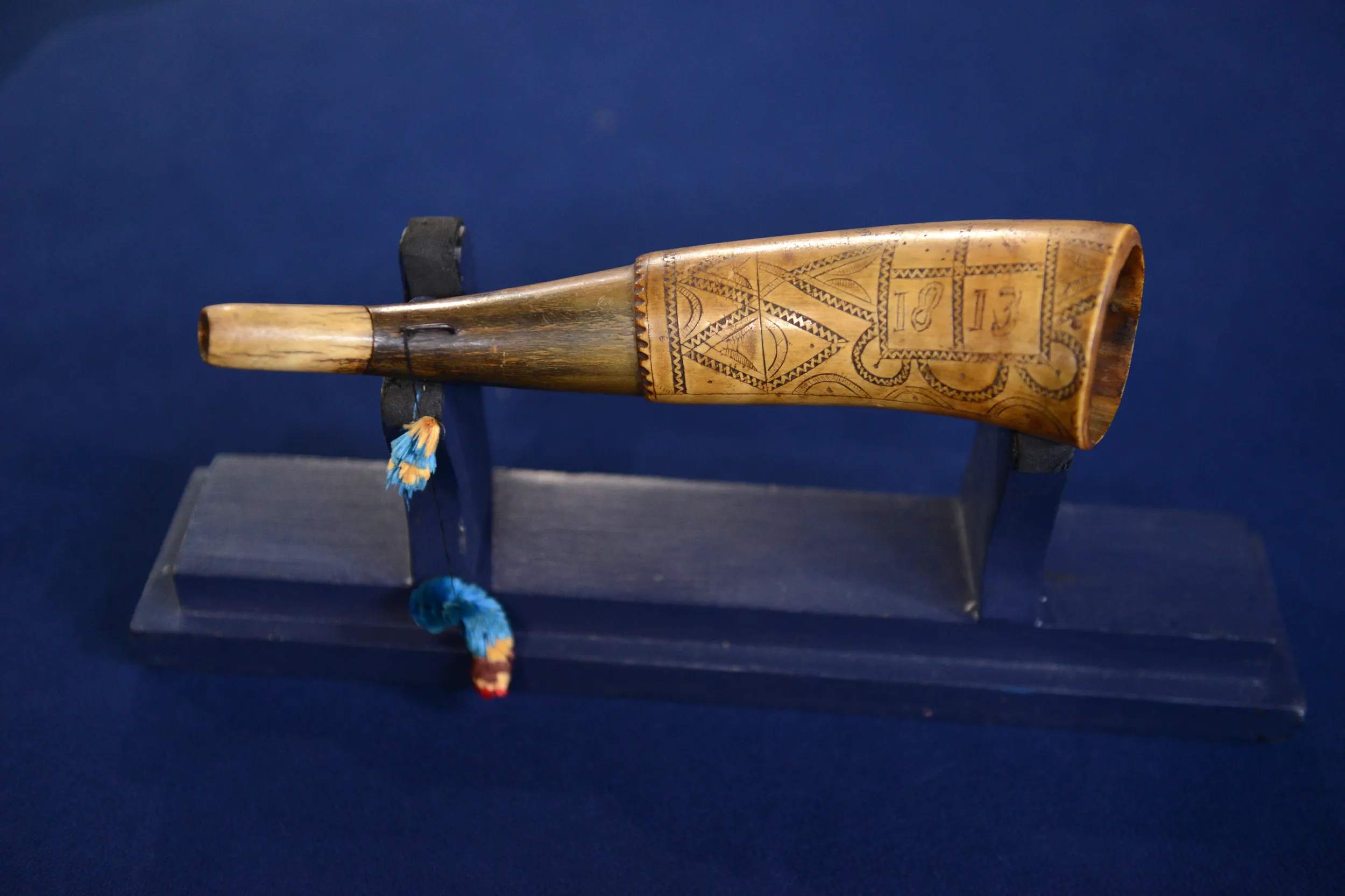GUEST: This has been in my family for a number of generations. It was given to my great-great-great-grandfather, who came to this country from Ireland. He ended up settling in Indian territory, which was in Indiana then. He was an Indian scout in the Battle of Tippecanoe and also in the Battle of 1812. And then later on, he ended up in Georgia as an Indian peacemaker working with relocating the Indian chiefs and the Indians from Carolina and Florida. And he became friends with a Seminole Indian chief from Florida named Billy Bowlegs, who gave this to him. And it's been in our family ever since.
APPRAISER: Billy Bowlegs was the Seminole chief after Osceola. During the War of 1812, the Seminoles sided with the British to a great degree. The British really stirred up a lot of hostility against the Americans. They fought a war after that with the American Army, and then again in the 1840s fought another war against the American Army. At that time, the principal chief was Billy Bowlegs. His name was Halpuda Mikko in Muscogee. They were one of the Creek-speaking groups. And Seminole means "runaway" or "separatist" in the Muscogee language, and they were considered to be separated from the main part of the tribe when they moved into Florida. And Bowlegs was a holdout. He refused to go over the Trail of Tears when they went to Indian territory. He was also like an ambassador. So when you see these big books of portraits of the American Indian representatives to Washington, Bowlegs is in all of them, and his portrait appears frequently. He was a very, very important chief in the southeastern United States. Finally, after years of warfare, they convinced him to move to Indian territory, which is now Oklahoma, in the 1850s, the late 1850s. Halpuda Mikko, "halpuda" means alligator, "mikko" is just the Muscogee word for chief. So he was called the alligator chief. If you look at this horn, it's dated 1813, so I expect it was carved at the end of the War of 1812 with the British.
GUEST: Oh, okay.
APPRAISER: I suspect it was made by someone in the tribe. It's a great, great piece of American history. And I saw that this horn was actually published in a historical quarterly in the 1950s. It's got incredible documentation in your family. The history is just unbeatable. You can see the back side's plain, and all the carving's on the front.
GUEST: Right.
APPRAISER: And that's probably... it was made to show from that side and to hang off a strap.
GUEST: Oh, okay.
APPRAISER: It's very hard to know what something like this would bring if it came up for auction. The bottom's gone, which makes absolutely no difference at all, and it's been gone for probably 150 years. I think conservatively, because it's so historic and connected with such an important person, with great documentation, if it came up for auction, $20,000 to $25,000.
GUEST: Oh, my. That's nice.
APPRAISER: I think it could bring significantly more.
GUEST: Mm-hmm.
APPRAISER: There are very few things from the Seminole wars, there are very few things connected with those men. And I love seeing it. It's a great piece of American history.
GUEST: Thank you so much.












